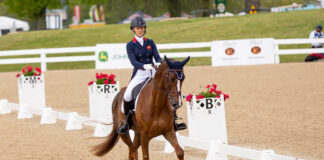 Changes recently altered the academic landscape at Auburn University College of Veterinary Medicine, the oldest veterinary school in the South.
Changes recently altered the academic landscape at Auburn University College of Veterinary Medicine, the oldest veterinary school in the South.
But this summer’s scholars, a group of 20 students, have the opportunity to experience a modified program that has transformed from an informal, mentored research format to a more formal endeavor, said Carl Pinkert, Ph.D., associate dean for research and graduate studies and professor of pathobiology.
Changes included streamlining the orientation and formal compliance requirements for the trainees, as well as broadening research experience.
At a Glance:
Location: Auburn, Ala. Opening date: Established as a college in 1897 Number of students: More than 360 in DVM; 60 enrolled in master’s/doctoral programs Financial aid: Yes Programs offered: DVM, MS, Ph.D., Residency, internship Website: www.vetmed.auburn.edu |
“Currently, the laboratory research immersion for summer scholars is coordinated with didactic lectures, topical journal article discussions and visits/tours to CVM and extramural sites to showcase research and career opportunities for veterinarians,” Dr. Pinkert said. Weekly laboratory meetings with mentors and peers provide an added avenue for individual growth, and students are encouraged to present their research.
A formal effort at recruiting students from other colleges was organized with an additional presence at the Student American Veterinary Medical Assn.’s symposium this year, Pinkert added, and expanded orientations for students and mentors outlined the structure of the program in advance, allowing for a more efficient program. Extracurricular activities are emphasized more than ever, too.
The college is undergoing other changes, as well, particularly in clinical rotations, which are done during a student’s senior year.
“This year, we’ve modified our rotations so all students do at least six weeks of equine work, six weeks of food animal work, two weeks of anesthesia, 12 weeks of small animal work, two weeks of radiology and two weeks of diagnostic pathology,” said Donna Angarano, associate dean for academic affairs. “Then, the remainder is elective opportunities to focus a little more in areas they’re interested in, or to explore new areas.”
The final eight weeks, called a preceptorship, are designated for students to devote time to supervised, hands-on experience at private practices. But the weeks prior are intentionally varied in different fields of veterinary medicine to keep students’ perspectives broad.
“You find out that there’s other worlds out there you don’t even know about,” Angarano said. “One of my jobs as associate dean is to get them to see what is available, get them to make educated, wise decisions.”
Angarano said she prefers Auburn’s diverse clinical rotations system to the “tracking” system that other schools use. Students who attend schools with tracking choose their focus in veterinary medicine early on and devote their senior year to that area, Angarano said.
But Auburn doesn’t limit students’ research interests to one topic.
“That’s one of the things that makes us unique as veterinarians,” she said. “We have a broad perspective of the animal kingdom, the problems and diseases. If we focus too much too early, we lose some of that perspective.”
———————————–
Click Here to view all Vet School Spotlights.






interesting
These articles were very helpful! Thanks!
Thanks! i was thinking about careers with equine activity!